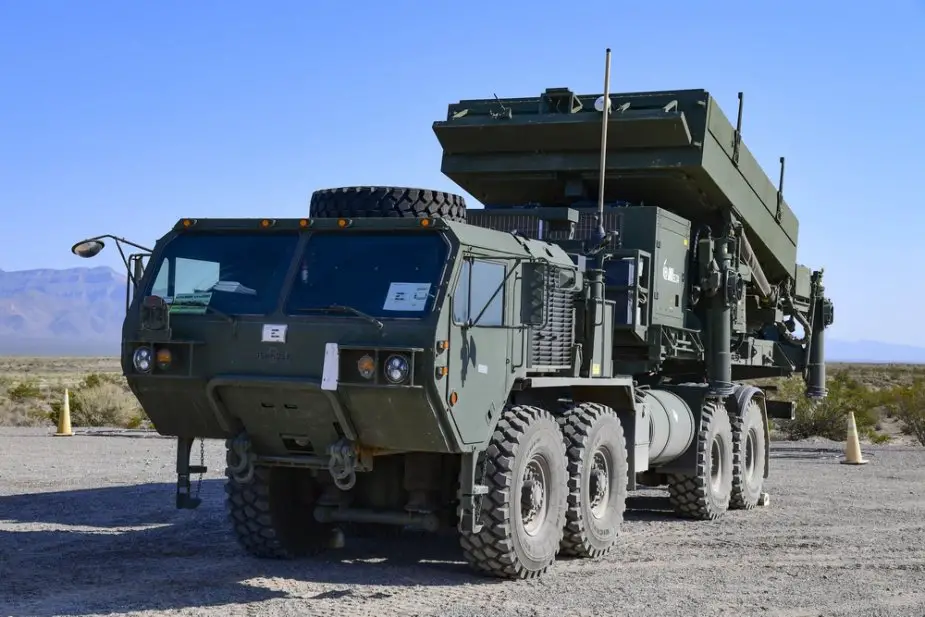Breaking news
US explores potential Iron Dome air defense system production in Arkansas.
According to an article by Breaking Defense on July 31, 2023, there have been discussions within the US Marine Corps about the possibility of establishing a production facility for the Iron Dome's Tamir interceptor and its Americanized version, SkyHunter, within the United States. The Marine Corps Program Executive Officer Land Systems Ground-Based Air Defense program manager, Don Kelley, visited Camden, Arkansas, on July 19, 2023, to hold talks with representatives from Raytheon and Israel's Rafael Advanced Defense Systems (R2S), who are working together on this project.
Follow Army Recognition on Google News at this link

The US Army tested the Iron Dome defense system in 2021 (Picture source: US DoD)
The idea of producing the Tamir interceptor in the US was first proposed by Raytheon and Rafael approximately three years ago, but the official selection of a production site had not been made until now. Camden, Arkansas, emerged as a potential candidate due to the presence of an existing Raytheon facility and other defense contracting establishments like Lockheed Martin, which produces the M142 HIMARS.
Don Kelley emphasized that if the US production facility becomes a reality, it could have significant implications for the Medium Range Intercept Capability (MRIC) program and the US Marine Corps. Furthermore, the Israeli Missile Defense Organization might consider this US site as a secondary source for Tamir missiles.
The MRIC system involves a truck-mounted Iron Dome launcher with Tamir interceptors, utilizing the Common Aviation Command-and-Control System (CAC2S) and a mini battle management control (BMC) system for the Tamir missile, along with the AN/TPS-80 Ground/Air Task Oriented Radar (G/ATOR).
Despite the potential benefits, the reasons for the delay in announcing the Tamir-SkyHunter US production site remain undisclosed. Some industry sources suggest that, in the meantime, the US could rely on Israeli-produced missiles.
The MRIC program has garnered support from senior leaders, including President Joe Biden's nomination for the US Marine Corps leadership. Following successful MRIC live-fire tests in September 2022, the Corps' Milestone Decision Authority expressed commitment to proceed with the certification process, with plans to deploy the first battery around 2025.
While the R2S team competes in other defense competitions, such as the Army's Indirect Fire Protection Capability Increment 2 (IFPC Inc 2), the potential establishment of a US production facility for the Tamir interceptor remains a subject of interest, as it could enhance US missile defense capabilities. The outcome of these discussions will play a crucial role in shaping the future direction of the MRIC program and the potential involvement of US manufacturers in the project.
As of May 16, 2023, the United States has purchased two Iron Dome batteries. The procurement process began in November 2011, with an initial deal valued at $100 million and the potential for the cost to rise significantly over time. In January 2019, it was reported that the United States would acquire two Iron Dome batteries for $373 million. This purchase included two command posts and radars, 12 launchers, and 480 missiles. The first battery was delivered on September 30, 2020.
The Iron Dome system, developed by Israel's Rafael Advanced Defense Systems in collaboration with the Israeli Defense Forces (IDF), is an advanced air defense system designed to intercept and destroy short-range rockets and artillery shells launched from distances of up to 70 kilometers.
The Iron Dome system consists of several components, including a radar system, a battle management and control unit, and a missile firing unit. The radar system detects incoming threats and tracks their trajectory, while the battle management and control unit determine the appropriate response and calculate the optimal intercept point. Each battery can defend up to nearly 60 square miles.
When a threat is detected, the Iron Dome system launches a missile to intercept it. The missile is equipped with a highly advanced guidance system that can adjust its trajectory in real-time for a successful interception. It detonates in the proximity of the incoming threat to maximize its destructive impact rather than making direct contact with it. In essence, Iron Dome's Tamir missile effectively neutralizes incoming threats launched from distances of 4-70 km. The Tamir missiles employ electro-optical sensors, steering fins, and proximity fuze blast warheads. Most Tamir missile components are sourced through the Raytheon Missiles & Defense supply chain in the United States.
One key feature of the Iron Dome system is its ability to differentiate between real threats and false alarms. This is achieved through "sensor fusion," where data from multiple sensors is combined to create a more accurate picture of the incoming threat. This helps minimize false alarms and reduces the overall cost of the system.
Since its deployment in 2011, the Iron Dome system has been highly effective at intercepting and destroying incoming threats. According to the Israeli Ministry of Defense, the system boasts a success rate of approximately 90%, making it one of the most efficient air defense systems globally.























